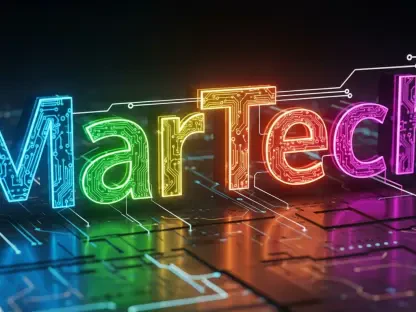The Rise of Influencer Marketing: A Transformative Industry
In today’s digital landscape, influencer marketing has emerged as a powerhouse, reshaping how brands connect with audiences across the globe. With billions of users engaging daily on platforms like TikTok, Instagram, and LinkedIn, this industry has become a cornerstone of the digital economy, driving unprecedented engagement and revenue. Current estimates place the market’s value at staggering heights, reflecting its critical role in modern advertising strategies and its ability to adapt to shifting consumer preferences with remarkable agility.
Diving deeper, the influencer ecosystem spans various segments, including diverse social media platforms and distinct influencer tiers such as nano, micro, and macro creators. Each segment plays a unique role, from nano-influencers fostering hyper-local trust to macro-influencers commanding vast audiences. The integration of search functionalities within social platforms has further amplified their impact, turning casual browsing into intentional discovery and making influencers pivotal in guiding consumer decisions.
Major players, including global brands, individual creators, and technology companies, continue to shape this dynamic market. Brands leverage influencers for authentic storytelling, while creators build personal empires through strategic content. Tech giants, meanwhile, innovate with algorithms and tools that enhance visibility and engagement. Underpinning this evolution are cutting-edge advancements like artificial intelligence and hybrid models, which are propelling the industry toward even greater heights.
Key Trends and Projections in Influencer Marketing
Emerging Trends and Technological Innovations
One of the most significant shifts in influencer marketing is the convergence of search and social platforms, transforming how users interact with content. Influencers now bridge the gap between intentional queries on search engines and organic engagement on social feeds, creating a seamless discovery experience. This blending of purposes allows brands to reach audiences at multiple touchpoints, enhancing both visibility and relevance.
Artificial intelligence stands at the forefront of this transformation, offering tools for trend analysis, precise audience targeting, and real-time sentiment monitoring. The rise of virtual influencers, crafted entirely through AI, exemplifies this innovation, enabling brands to maintain consistent messaging at reduced costs. Additionally, consumer behavior, particularly among Gen Z, has shifted toward valuing authenticity and practicality, pushing creators to prioritize genuine content over overly curated aesthetics.
Beyond these advancements, new opportunities are emerging in areas like B2B influencer strategies and niche targeting. Platforms like LinkedIn have become fertile ground for thought leadership, where influencers optimize content for search algorithms while engaging professional audiences. Nano-influencers, with their tight-knit communities, also provide unmatched precision for brands aiming to connect with specific demographics, signaling a broader trend toward hyper-focused campaigns.
Market Growth and Future Outlook
Current data underscores the explosive growth of influencer marketing, with projections estimating the industry will reach $84.89 billion by 2028. Even more striking, the broader creator economy could soar to $528.39 billion by 2030, highlighting the vast potential for expansion. These figures reflect a robust market fueled by increasing digital adoption and the pivotal role of influencers in shaping purchasing decisions.
Daily search volumes across platforms stand at an astonishing 45.1 billion, with non-Google sources like social apps gaining significant traction as discovery hubs. This shift indicates a fundamental change in how consumers seek information, often turning to TikTok or Instagram before traditional search engines. Such trends emphasize the growing importance of social platforms as critical components of marketing funnels, challenging brands to adapt swiftly.
Looking ahead, hybrid discovery models that combine search engine optimization with social engagement are expected to drive sustained growth. Data-driven strategies will further refine campaign effectiveness, enabling brands to predict outcomes and allocate resources efficiently. As these models mature, the influencer marketing landscape will likely continue evolving into a more integrated and measurable discipline.
Challenges Facing the Influencer Marketing Industry
Economic pressures are reshaping compensation structures within influencer marketing, with a notable shift toward performance-based models. Brands increasingly tie payments to tangible outcomes like conversions rather than mere impressions, reflecting tighter budgets and a demand for measurable returns. This change compels creators to focus on driving direct impact, often at the expense of creative freedom.
Ethical concerns also loom large, particularly around trust and transparency. The oversaturation of affiliate content has led to consumer skepticism, while the use of AI in campaigns raises questions about authenticity and disclosure. Potential platform bans, such as restrictions on TikTok in certain regions like the U.S., add another layer of uncertainty, pushing brands and creators to diversify across multiple channels to mitigate risks.
To navigate these hurdles, a renewed emphasis on authentic, value-driven content is essential. Long-term partnerships between brands and creators can foster genuine connections with audiences, rebuilding trust in an era of fleeting trends. Additionally, investing in cross-platform strategies ensures resilience against market disruptions, allowing the industry to maintain momentum despite external challenges.
Regulatory Landscape and Ethical Considerations
Privacy regulations are increasingly influencing how data-driven influencer campaigns operate, imposing strict guidelines on data collection and usage. Compliance with laws governing endorsements and transparency, especially concerning AI-generated content, has become non-negotiable for brands aiming to avoid legal pitfalls. These regulations aim to protect consumers while ensuring fair practices in a rapidly digitizing market.
Maintaining consumer trust remains paramount, particularly with the rise of virtual influencers and automated tools. Industry standards are evolving to address these innovations, advocating for clear disclosures and ethical content creation. Brands must balance leveraging technology with preserving human-centric values, ensuring campaigns resonate on a personal level without compromising integrity.
Regulatory changes also push for sustainable and culturally relevant marketing practices. Campaigns that align with societal values and demonstrate accountability are more likely to gain traction in a scrutinized environment. As rules tighten, the industry must adapt by prioritizing ethical frameworks that support long-term credibility over short-term gains.
The Future of Influencer Marketing: Opportunities and Disruptors
Hybrid models that integrate search-optimized influencer content with social engagement are poised to redefine marketing strategies. These approaches enable brands to capture audiences across different stages of the consumer journey, from initial research to final purchase. Such integration not only boosts visibility but also enhances the effectiveness of campaigns through cohesive messaging.
Potential disruptors, including the emergence of new platforms and shifting consumer preferences, could reshape the current landscape. Global economic conditions may also impact budgets and priorities, forcing brands to innovate under constraints. Staying ahead of these changes requires agility and a willingness to experiment with untested channels or formats before they become mainstream.
Innovation, particularly through AI advancements and data-driven personalization, will continue to play a central role in future strategies. The creator economy’s expansion offers additional growth areas, as does the rising demand for relatable, skill-focused content that empowers audiences. Brands that harness these trends while anticipating disruptions stand to gain a competitive edge in an ever-evolving field.
Conclusion: Navigating the Road to $84B and Beyond
Reflecting on the insights gathered, it becomes evident that artificial intelligence and hybrid models have been instrumental in propelling influencer marketing to new heights. The industry has witnessed a remarkable transformation, driven by technological integration and a deeper understanding of consumer needs. This period of rapid evolution has set a strong foundation for what lies ahead.
Moving forward, brands are encouraged to adopt creator-centric, data-driven approaches as a key step in maintaining relevance. Embracing emerging trends with a focus on adaptability has proven vital in meeting both economic and consumer demands. Prioritizing authenticity in every campaign is identified as a cornerstone for building lasting trust.
Lastly, the journey ahead demands strategic investments in innovation and partnerships that can weather dynamic shifts. Exploring untapped potential in niche markets and leveraging advanced analytics are seen as actionable pathways to sustained growth. As the digital landscape continues to unfold, those who commit to evolving alongside it are best positioned to thrive.









